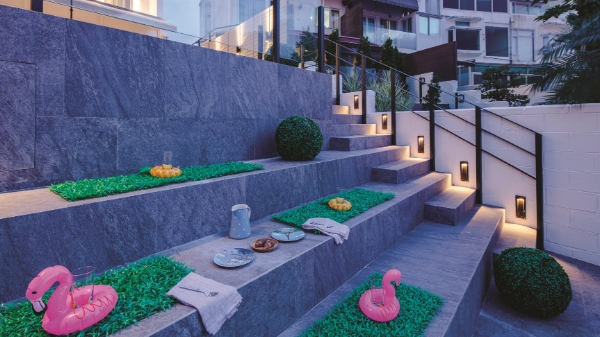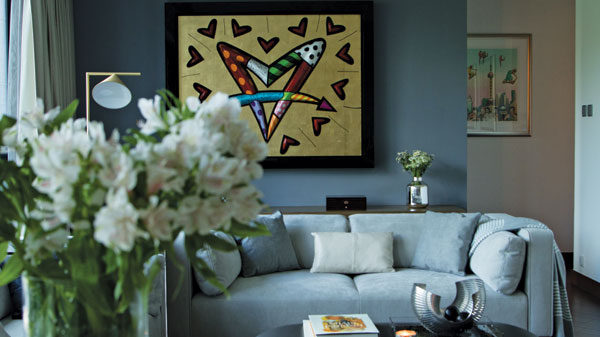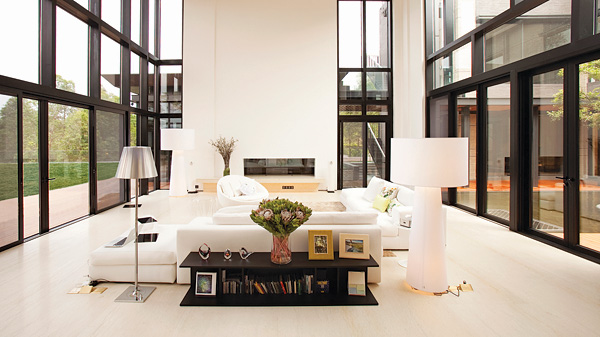For those in search of sanctuary from central Hong Kong’s unceasing bustle, Sai Kung always looms large as the first port of call. Set at the easternmost point of the New Territories, this unspoilt peninsula boasts beautiful beaches and hiking trails, and even a discreet waterfall or two. Given its undoubted allure, it’s no surprise that many who come to visit often wonder if they could make this enchanting enclave their permanent home.

It was the chance to occupy a traditional townhouse in such scenic setting that appealed to Dr Benny Liu when he purchased a 2,000sq.ft four-bedroom split-house in the Marina Cove development, seeing it as the perfect place for him and his wife to raise their two young daughters and, of course, a pet turtle. Built back in the ’80s, his chosen residence had sat unoccupied for several years, obliging him to invest in a little contemporary refurbishment.
Early in 2017, the family set about tweaking the townhouse in line with their personal preferences, but soon found themselves a little out of their depth. It was then that they called on the services of Clifton Leung Design Workshop, an award-winning Hong Kong-based specialist in interior design. No novice when it comes to refurbishing the perfect family-friendly space, Clifton Leung, the consultancy’s founder, saw creating a synergy with the nearby marina as one of his key priorities.

With a surfeit of space to play around with, he and his team set out to deploy a natural look to every nook and corner of the home. Paying particular attention to the lighting – both natural and artificial – one of his priorities was to optimise the size of the windows, pairing them with bright white blinds to maximise the interior brilliance. Skylights were also installed at key family focal points.
A further family-friendly nexus was formulated in the kitchen, where a commodious island / breakfast bar dominates the central space. Commenting on the thinking behind this, Leung said: “A space for preparing and serving food is the natural heart of any home. In this instance, everyone loves the island feature and likes to hang out here even after meals.”

Overall, only two rooms are notable for their digression from the natural palette that typifies the rest of the residence – the sleeping spaces of the doctor’s two daughters. Choosing the decor themselves, the two girls – an eight-year-old and an 11-year-old – were delighted that their rooms were set side by side and linked by a secret passage.
Upstairs, the master bedroom for the parents is spread across the top two floors. Linked to this dominant sleeping space is a glass-walled en suite bathroom, complete with an extensive wet area, marble vanity and an egg-shaped bath. Within the connected study, the shelving feature is notably lofty, which craftily emphasises the ceiling height and renders what Leung terms a “cathedral roof”.

The beauty of the home isn’t only found internally, however, with the beautifully landscaped rear garden occasioning a majestic and scenic view out across the harbour. This makes it just the perfect place to enjoy a family brunch, before tiptoeing down to the water’s edge along a series of artfully-contrived concrete steps.
It’s rare, indeed, to find a Hong Kong home so in tune with nature and the rawer elements of maritime living, yet the Marina Cove house succeeds in this magnificently. Somehow it manages to incorporate the natural beauty of its location, reflect it and magnify it, yielding an alluring blend of sea and shore, while embodying the kind of domestic bliss most of us can only dream of.
Text: Bailey Atkinson, Photos: Clifton Leung Design Workshop















